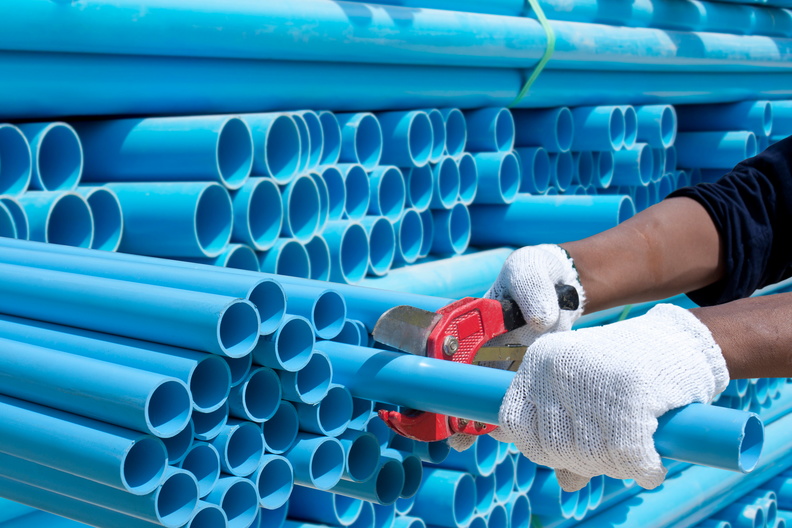Plumbing pipes are the unsung heroes of our homes, silently carrying water to our faucets and efficiently managing wastewater. Have you ever wondered about the intricate workings of plumbing pipes? This article delves into the details, providing a comprehensive guide on how plumbing woes pipe works.
In this guide, we’ll walk through the need-to-know details about the pipes that carry fresh water into your home and wastewater out. I’ll overview the different types of pipes, what they do, how they’re installed, and tips for keeping them in good shape. We’ll also talk about common problems you might run into and when upgrades are needed.
What are plumbing pipes?
Plumbing pipes are the arteries of our homes, transporting water for various purposes. From supplying clean water for drinking and bathing to facilitating the disposal of wastewater, plumbing pipes play a vital role in maintaining a hygienic living environment.
Materials Used in Plumbing Pipes
Understanding the materials used in plumbing pipes is crucial. Common materials include copper, PVC (polyvinyl chloride), PEX (cross-linked polyethylene), and galvanized steel. Each material has unique properties affecting durability, cost, and compatibility with different plumbing systems.
The Journey of Water through Plumbing Pipes
Inflow
The journey begins with the water supply entering your home. Whether sourced from a municipal supply or a well, plumbing pipes ensure the safe and efficient transport of clean water to various fixtures.
Water Pressure Regulation
Learn about the importance of water pressure regulation in plumbing pipes. Discover how pressure-reducing valves maintain optimal water pressure, preventing damage to the plumbing system and ensuring a steady flow.
Outflow
Once used, wastewater needs proper disposal. Plumbing pipes efficiently carry wastewater from sinks, showers, toilets, and appliances to the sewer or septic system.
Ventilation Systems
Explore the role of ventilation systems in plumbing pipes. These systems prevent airlocks and ensure smooth wastewater flow, contributing to the overall efficiency of the plumbing system.
The Building Blocks
The arteries of any plumbing system are the pipes that water flows through. Over the years, different materials have been used to manufacture pipes – copper, galvanized steel, cast iron, CPVC, PVC, and PEX among them. The type of pipe selected for parts of the system depends on the job it needs to do. We’ll focus on the most common modern pipe options: PVC, copper, and PEX.
PVC Pipes
PVC or polyvinyl chloride plastic is a fixture in most modern plumbing systems – used for freshwater supply lines, drain lines, vent stacks, and more. Let’s dive into the key details:
Composition and Characteristics
PVC pipe contains PVC resin, stabilizers, pigments, lubricants, and stiffeners. It’s durable, corrosion-resistant, economical, and easy to install. PVC is available in white and gray shades plus different pressure classes indicated by the rating stamped on the outside (for example, PVC 160 has a pressure rating of 160 PSI).
How Plumbing Pipe Works
Understanding the types of joints and connections used in plumbing pipes is essential for preventing leaks and ensuring a durable system. From soldered joints in copper pipes to compression fittings in PVC pipes, each method has its advantages. Discover how plumbing pipes accommodate temperature changes through expansion and contraction. This section explores the significance of expansion loops and flexible connectors in preventing damage to the plumbing system.
Troubleshooting Plumbing Pipe Issues
No system is flawless, and plumbing pipes are no exception. Learn about common issues like leaks, clogs, and corrosion, along with practical tips for troubleshooting and maintenance. Empower yourself with DIY fixes for minor plumbing pipe issues. However, understand when it’s time to call a professional plumber to avoid exacerbating problems.
FAQ
What is the most durable material for water pipes?
Copper has the longest lifespan of popular piping materials, with an expected duration over 70 years if properly installed. PEX and PVC pipes are also highly durable for freshwater plumbing.
Why do pipes corrode over time?
Factors like acidic water chemistry, mineral deposits, salt content, and oxygen exposure corrode many metals from the inside slowly. This leads to leaks, flow issues, and contamination as scale or rust flakes off.
Why might low water pressure happen suddenly?
Clogs from sediment buildup or obstacles blocking the service line are common culprits. Friction loss from undersized, kinked, or too many elbow connections pipes reduces pressure too.
What temperature should hot water pipes be insulated to?
For optimal energy efficiency and minimizing scalding risks, insulate distribution pipes to limit heat loss maintaining 120°F-140°F range at fixtures. Higher temps waste more energy.
Can leaky iron pipes be repaired instead of fully replaced?
In many cases, experienced plumbers can halt pitted cast iron drain pipe leaks via trenchless epoxy sealing instead of major concrete-cutting pipe replacements. But deterioration usually continues, requiring vigilant monitoring.
Conclusion
Understanding how plumbing pipes work is essential for homeowners. From the materials used to the intricate workings, this article has provided a comprehensive guide. Remember, a well-maintained plumbing system ensures a comfortable and hygienic living space.
Responsible plumbing system operation balances conservation, health protection, and ongoing maintenance. Learn warning signsUNIQUE SUMMARY PARAGRAPH avoiding generic conclusions. of issues early before they balloon into headaches. Review needs with local qualified specialists to map upgrades matching family use. Protecting clean abundant water remains our duty for households worldwide.









